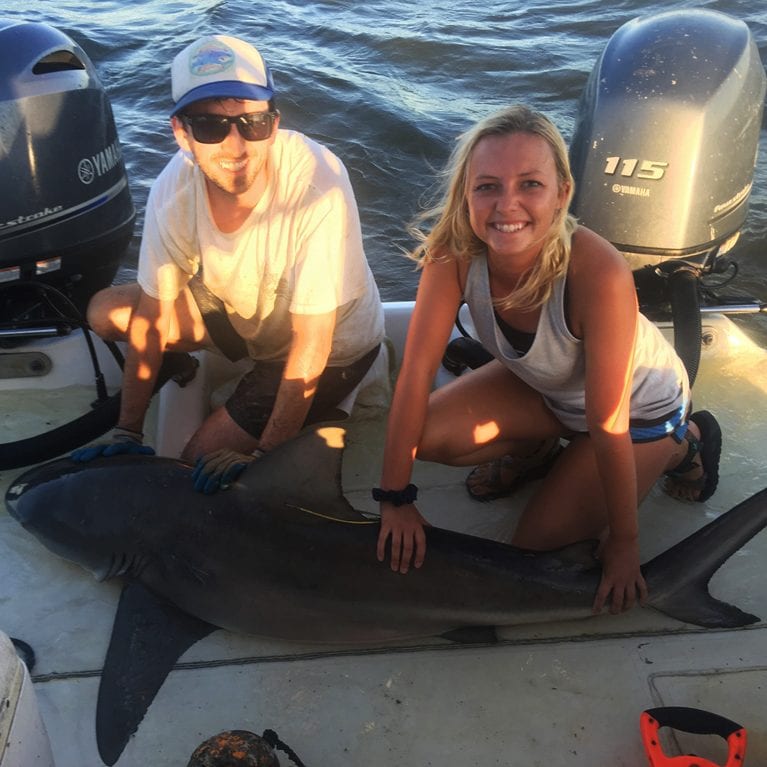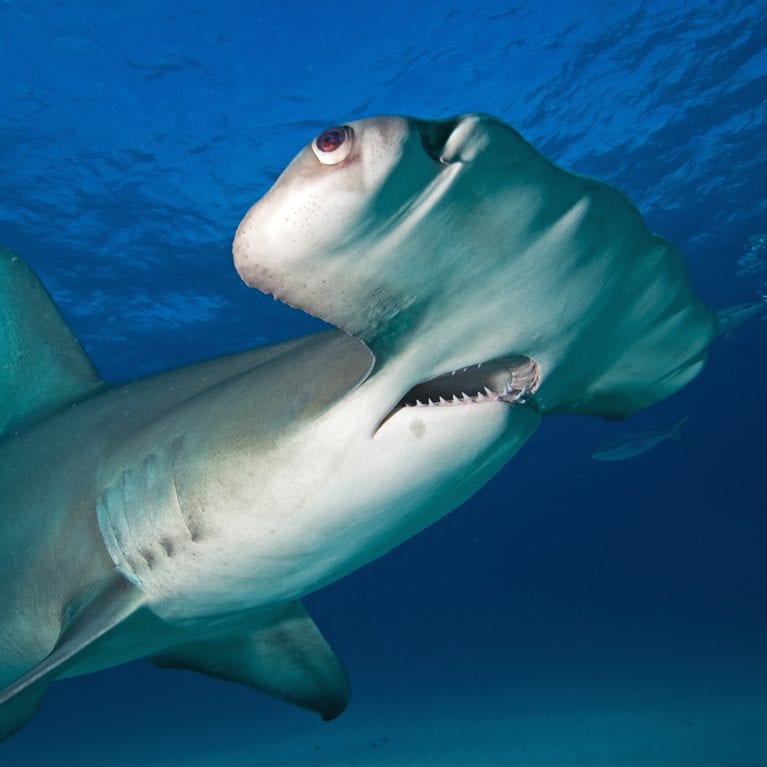Eat or be eaten
Do sharks move to follow their prey or to avoid the areas where their predators are most abundant? Cheston is looking at what effect the densities of blue crabs (the prey) and bull sharks (the predator) have on where bonnethead sharks choose to move.
I am a marine fish ecologist who specialises in coastal sharks. I’ve been fascinated by the natural world from a young age, but nothing has captivated me like water and everything that lives within it. When I was growing up in Tennessee my first loves were frogs and especially salamanders, but I later transitioned to fishes, and sharks and rays became my favourites. During my undergraduate studies my interests became more focused on fisheries management and conservation. Volunteer work led to a position as a technician, which in turn led to an internship at Mote Marine Laboratory, and eventually I...


Effects of prey and predator distribution on movement and habitat use of bonnethead sharks
The aim of this study is to simultaneously evaluate the relative influences of both prey and predator distribution and density on the movement and habitat use of an intermediate predator by combining data from extensive fishery-independent surveys and acoustic tracking to provide a novel evaluation of these dynamics.
This project has been chosen as it is relevant to questions in applied science (management and conservation) and basic ecology. The conservation challenge is here is the difficulty in assessing movement patterns in marine species and the underlying drivers of those movements – which are important for effective fisheries management. This challenge originates, partially, from the definition of Essential Fish Habitat in amendments to the Magnuson-Stevens Act in 1996; which spurred an effort to understand habitat use at all life stages of fishery-relevant species. Additionally, the drivers of movement – especially in juvenile or intermediately sized sharks – have been of interest in the field for many years, with some studies suggesting predator presence supersedes prey availability in driving juvenile shark movement. This topic is more relevant than ever as the field continues to progress towards ecosystem-based and spatially-explicit management approaches.
Predation risk is an influential factor in behavioral decision making in many ecological contexts (1), though both prey distribution and predation risk are thought to be important drivers of animal movement (2). While predator prey movement dynamics have been studied in marine predator-herbivore systems (3), empirical studies examining the combined effects of predation risk and distribution of mobile prey are lacking (4). <br/><br/>Apalachicola Bay is a large, river-influenced estuary containing a variety of habitats including oyster reefs, mud flats, and seagrass beds, bordered by a series of four barrier islands. The highly productive estuary supports a diverse assemblage of teleost and elasmobranch fishes, including bonnethead and bull sharks (5). This system is an excellent candidate for this study, as the patchy distribution of habitat types in the bay suggest a heterogeneous foraging landscape, and bonnetheads feed heavily on blue crabs (6), which are abundant in coastal estuaries. Bonnetheads, which have high site fidelity (7), face predation risk from large coastal sharks like bull sharks (8), which are among the most abundant large predators in Apalachicola Bay (Peterson & Grubbs, unpublished data) and are known to use similar estuarine lagoons for up to several months over the summer (9).<br/><br/>1. Lima, S.L., L.M. Dill. 1990. Can J Zool 68: 619-640.<br/>2. Gotceitas, V., Colgan, P. 1990. Copeia 1990: 409–17.<br/>3. Burkholder, D. A., et al. 2013. J Anim Ecol 82: 1192-1202.<br/>4. Hays, G.C., et al. Trends Ecol Evol 31: 463-475.<br/>5. Carlson JK, Brusher JH 1999. Mar Fish Rev 61: 37–45.<br/>6. Cortes, E., et al. 1996. B Mar Sci 58: 353-367.<br/>7. Driggers, W.B. III, et al. 2014. J Exp Mar Biol Ecol. 459: 61-69.<br/>8. Cortes, E. 1999. ICES J Mar Sci 56: 707-717.<br/>9. Yeiser, B.G., M.R. Heupel, and C.A. Simpfendorfer. 2008. Mar Freshwater Res 59: 489-501.
- Track bonnethead and bull shark movements within Apalachicola Bay, for the purpose of exploring the influence of bull sharks on bonnethead movements.
- Analyze the movement data collected from bonnetheads in the context of prey density (primarily blue crabs) and bull shark movement behavior. This question is the thrust of my dissertation.
- Use the movement information collected from acoustic tracking to develop hierarchical movement models, constructed from individual-based movement models, to make population-level conclusions on drivers of movement behavior. This objective is critical for the study to have broader application outside this system.
Public presentation at MODS: Save Our Seas Distinguished Speaker Series : Bonnethead Shark Ecology

